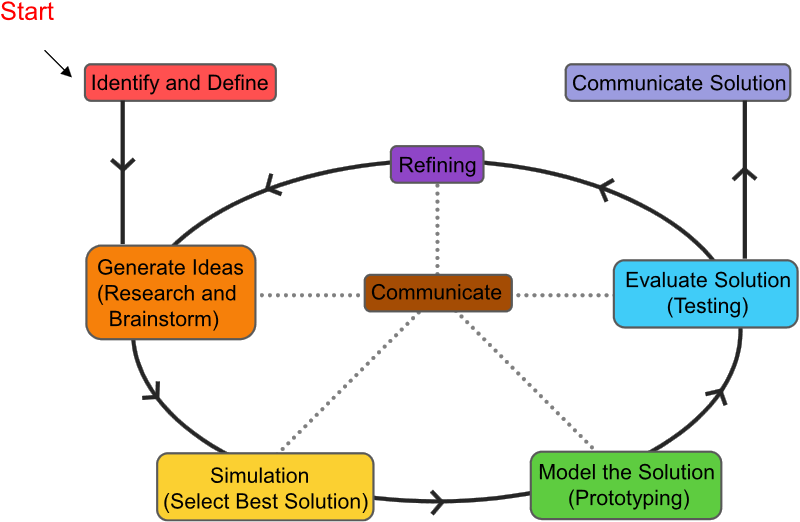INSPIRES:
Increasing Student Participation, Interest and Recruitment in Engineering and Science
The engineering design process (shown below) is a cycle of steps that engineering teams use to guide them as they solve problems. The iterative (repeated) cycle provides a framework for approaching a complex problem. When used properly, it leads to a systematic and rational design process where decisions are made based on scientific and engineering reasoning, versus simple trial and error approaches. The process is open-ended, because when you start the problem you don’t know what the best solution will be to meet the requirements. The engineering design process does not yield a single "correct" answer. On the contrary, there are often many solutions that will meet the design goals.
To determine how to build a product or a process, engineers must first identify and define the problem to be solved and develop design specifications and goals. Then, they must creatively use their understanding of math and science to brainstorm many possible solutions to the problem and to compare the ideas. In order to select the most promising idea, mathematical models are often used to predict product performance and aid in decision making. In addition to performance, there are many other important factors that may influence the idea that is chosen. These often include cost, safety, quality, reliability, aesthetics, ethics and social or environmental impact. Inevitably, compromises must be made to achieve the best balance of these factors. Engineers create a prototype, or early version of the design, once an idea is chosen. The prototype is tested and evaluated to measure performance and then refined to make improvements. The engineering design cycle is typically repeated several times to refine the product. Since engineering design is performed by teams, effective communication is central to all the steps in the process.

Diagram © UMBC